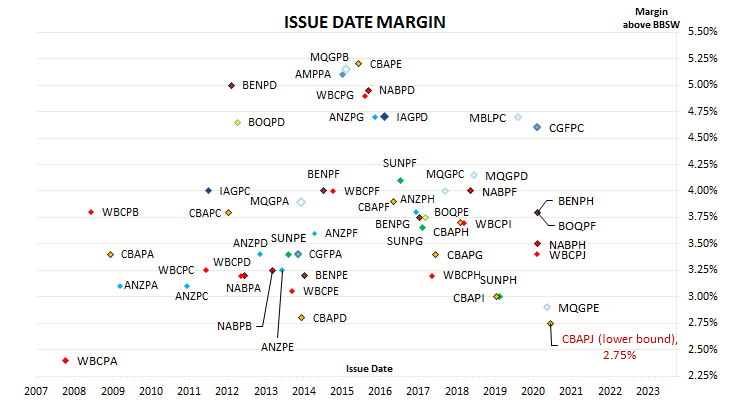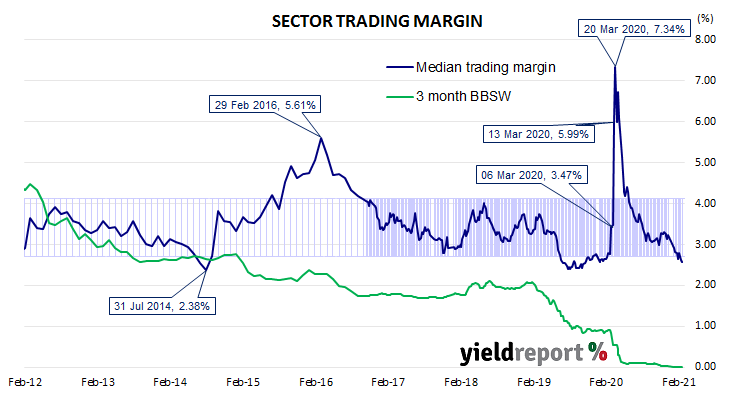Summary: Commonwealth Bank to issue new hybrid security; no upcoming call on existing hybrids until October; first call date in October 2026; initially to pay around 2.75% (annualised, including franking credits), issue margin below low end of trading margin band.
In recent years, when one of a company’s existing hybrids approaches its first call date (or first optional exchange date), speculation turns to the likelihood of a replacement hybrid security. However, this is not the case with Commonwealth Bank’s latest hybrid security offer. The next hybrid approaching its call date does not do so until October and, as one of Australia’s highest capitalised banks, Commonwealth Bank may be just “going early” to capitalise on the current state of the listed hybrids market.
Commonwealth Bank plans to raise $750 million via an issue of PERLS 13 Capital Notes (ASX code: CBAPJ) securities, with the ability to raise more or less than this amount. The new securities will be perpetual, convertible, subordinated, unsecured, redeemable notes and the proceeds will be “used to fund CBA’s business”.
The new notes have some features in common with both equities and debt securities. Distributions are at the discretion of directors but they are calculated according to a set formula with reference to the $100 face value of the securities. The notes will qualify as Additional Tier 1 (AT1) capital under the Basel III bank regulatory framework, which means they have the now-standard “event” clauses which may lead to early conversion into ordinary shares or a write-off of the capital notes should APRA require it. In the event Commonwealth were wound up and APRA had not already forced a write-off, its hybrids would rank above ordinary shares but below ordinary debt securities and other liabilities.
The new capital notes have an indicative distribution rate equivalent to 3 month BBSW plus a margin which lies in a range of 275bps to 295bps. The final margin will be determined by a “book build” and the result will be announced on 4 March 2021. A book build is a tender process managed by investment banks on behalf of the issuer in which investment institutions each place bids for a set volume at a price/yield. (This is the same way as the AOFM holds tenders to sell government bonds each week). If history is any guide, then the margin is likely to be set at the lower end.

The chart above shows the history of issue margins of hybrid securities over the last decade or so, including the GFC period in 2008/2009. The new capital notes are shown at the lower end of the indicative margin (275bps).
Distributions will be non-cumulative, at the discretion of directors and paid quarterly in arrears. However, should a distribution not be paid, Commonwealth cannot declare or pay a dividend on its ordinary shares. It would also not be allowed to undertake a buy-back nor a capital reduction of its ordinary shares.
At the prevailing level of interest rates and if the margin is at the lower end of the range, the new notes will initially pay around 2.75%* (annualised) inclusive of franking credits. *As interest rates change, specifically the bank bill swap rate, quarterly payments will also change.
The first call date is 20 October 2026. This is the first date at which Commonwealth can exchange all or some of the securities in the absence of a “Non-Viability Trigger Event” or one of the other types of “event”. Exchange, in the context of listed hybrids, may mean redeem, resell to a third party or convert into ordinary shares. The scheduled mandatory exchange date is 20 October 2028.
Issue margins are set close to the margins of comparable hybrids already trading on the ASX. Readers will see Commonwealth’s likely issue margin is below the low end of a band which captures the majority of median trading margin readings from 2011.


